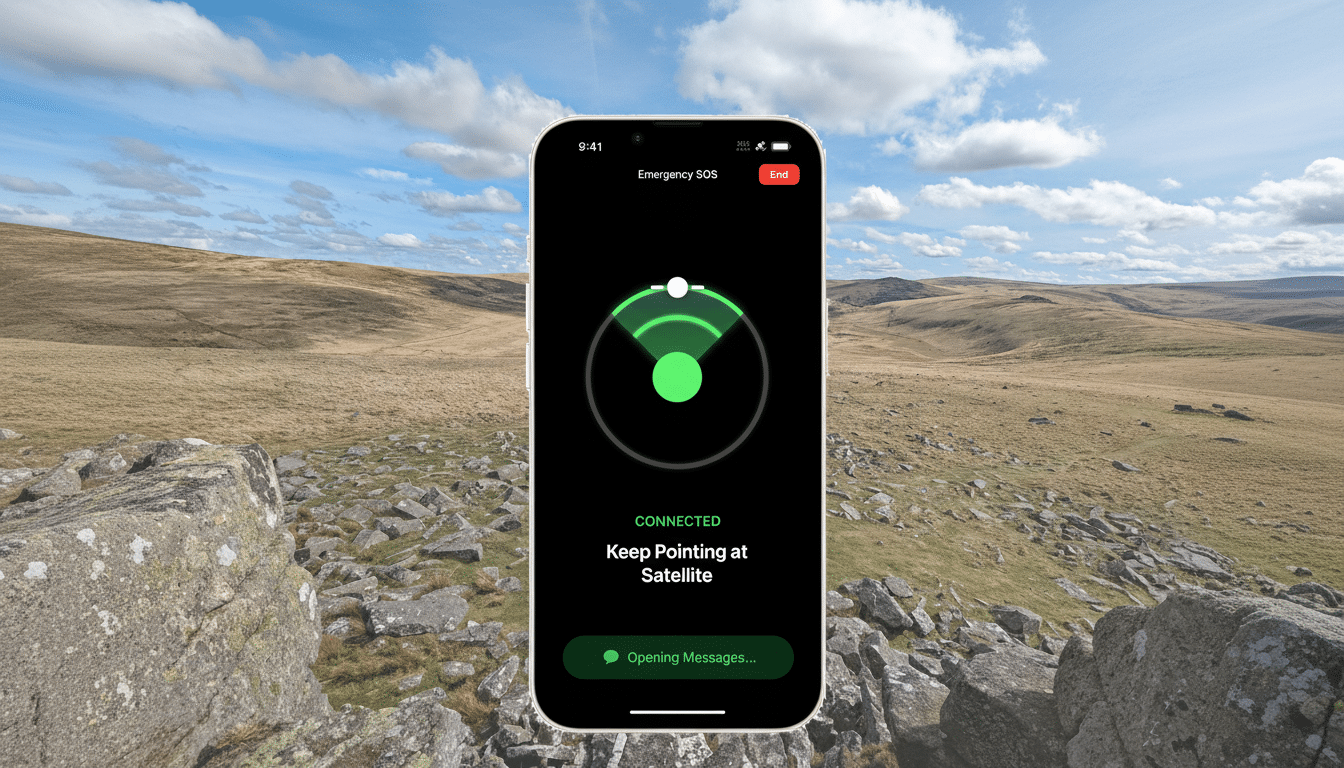Apple is extending by one year the period that iPhone 14 and iPhone 15 owners can use its satellite features for free, postponing the moment when early adopters may have to begin paying.
The promotion ensures that Emergency SOS via satellite and other supported SOS and messaging services will remain free for eligible users in supported countries.

What’s Included, and Who’s Eligible
The extension is effective for existing iPhone 14 and 15 users who activated their devices in markets where Apple’s satellite features are supported. Users will maintain access to Emergency SOS and international emergency calling via satellite, which can contact emergency services in country in which you subscribe through a guided, text-based experience when cellular service and/or Wi-Fi are not available. In areas where it’s available, Roadside Assistance via satellite continues to be included, and Apple’s satellite-based Find My and Messages features are supported, with the caveat that messaging may require a carrier plan.
That sounds like the iPhone will continue walking you through an emergency checklist, compressing your answers for low-bandwidth links, and directing you to point the phone at the sky to lock onto a satellite. Messages sent under wide-open skies often travel in seconds; under light tree cover or in canyons, transmission might take longer.
Why the Free Year Counts
More and more, emergency responders say the satellite-based messengers built into smartphones are speeding up rescues in areas where there is no cell coverage. Search-and-rescue teams in North America and Europe have described numerous instances in which stranded hikers, drivers and backcountry skiers were able to communicate their location and condition to dispatchers using Apple’s system. In normal times, roadside partners deal with millions of assistance calls each year, and to have satellite as a backup is a good way to minimize the chance that a dead zone turns into a life-threatening lag.
From a user-experience standpoint, Apple’s interface decreases friction at exactly the wrong time. As that happens, data-dispatch templates bring the most vital information to the tip of a dispatcher’s fingers, location is exchanged automatically, and a compression algorithm crams messages through the same narrow satellite links. Keeping that user experience free longer encourages real-world use and makes it more likely that more iPhone owners will give it a shot (and remember that it exists) when they need it.
The Pressure to Compete in Space
(Apple’s move hits as the race to go direct to device heats up. SpaceX and T‑Mobile are introducing direct-to-cell services that allow you to text today and are going after data, voice and video next. Early pricing signals from carriers suggest a paid model, with fees exempted on premium plans only. Demonstrations of direct-to-cell from massive satellite constellations also seek to eliminate the “point-at-the-sky” action Apple now needs.
In other words, Apple is holding onto a first‑mover advantage while rivals work to shove a cellular‑like offering from space. By offering free access, Apple buys time to ramp up usage, gather data on reliability and hone the value proposition before putting a price on it — if it ends up charging anything at all.

Globalstar Upgrades and What Happens Next
Apple’s satellite partner, Globalstar, is gearing up for a big network refresh. Another constellation (not quite sure how they are counting these this time, listed as 48 sats) on the way to increase throughput and link margins, all aimed at improving performance in more adverse environments (inside vehicles, through trees, etc.). Apple has already spent hundreds of millions of dollars to expand ground stations and network capacity supporting this service, and Globalstar has disclosed further satellite manufacturing and launch contracts to increase coverage and redundancy.
Aspects of the feature set are growing on the device side, too. Being able to send and receive satellite signals has been indicated as not being restricted to the phone screen; emergency connections on wearables is a further extension of that safety push. The more Apple threads satellite among core apps like Messages, Find My and emergency workflows, the harder it is to even imagine being without the feature—and perhaps even part of a future bundle / subscription option with carriers or services.
What iPhone Users Should Do Now
Owners of iPhone 14 and 15 can see if they’re eligible now by going to Settings, selecting Emergency SOS options and running the built-in demo to become accustomed to the flow. Make sure Location Services are turned on and that your software is up to date, and keep in mind the basics: Holding your device in a clear spot with a line of sight to the sky speeds up transmission. Satellite messaging is limited to short text messages and emoji; you can’t send photos or video. And preserving battery life is essential if you are going to be without mainstream cellular service for an extended period.
For most of us, the extension means no immediate decision on whether that peace of mind is worth a monthly fee. For Apple, it’s a tactical pause—one that keeps the momentum going, prevents churn of customers to rival supplies, and allows the company to reintroduce improvements when space-to-phone is a very different (and much bigger) ecosystem.
Bottom line: Keep lifesaving satellite tools free for another year, that’s what iPhone 14 and 15 owners do! In a fast-growing market hurtling toward universal off-grid connectivity, Apple is gambling that a wide, frictionless pipeline today will pay off later, once the industry’s price and performance tiers become better defined.

